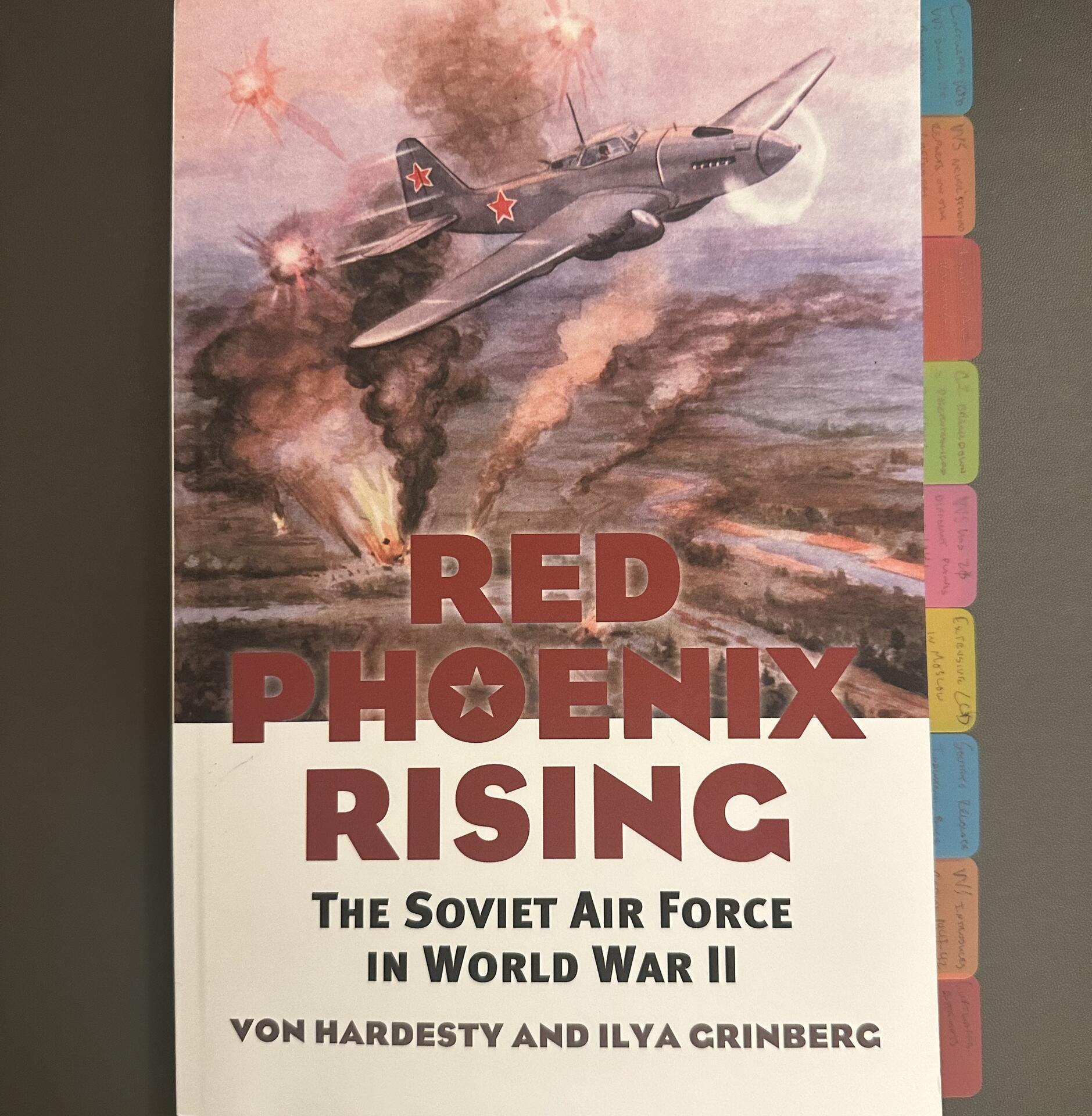steve on Nostr: “Red Phoenix Rising: The Soviet Air Force in World War II” by on Von Hardesty & ...
“Red Phoenix Rising: The Soviet Air Force in World War II” by on Von Hardesty & Ilya Grinberg
⭐️⭐️⭐️
A professor once called this book a “meat and potatoes” history and it’s hard to argue the idiom having read Hardesty & Grinberg’s work. The book’s lack of frills is made up for by its detail on an often forgotten subject. For every American casualty of WWII, the Soviets sacrificed 50 of their own people. In part due to their heavy casualties, a Soviet (and persistently Russian) trope has emerged that insinuates they don’t innovate and simply “throw bodies” at problems. This book handily dispels that myth in showing how despite being caught flat-footed by the Nazi invasion, the Soviet Air Force (or VVS) rapidly adapted and innovated its tactics and equipment to achieve battlefield success. This strategic adaptation often went against the grain of Communist ideology that favored centralized decision-making and resource controls. Also interesting was the comparison to Western air forces: while Anglo-American airmen pursued independent air arms tasked with strategic bombing, the VVS acted as a true auxiliary to the Army in support of ground maneuver. This was a natural byproduct of their geopolitical reality (its hard to worry about bombing Berlin when your airfield is being overrun), but had implications on the VVS’ effectiveness nonetheless. This was dry but interesting book that delivers an important message—don’t underestimate the Russian ability to adapt on the front lines. 🪆🛩️
⭐️⭐️⭐️
A professor once called this book a “meat and potatoes” history and it’s hard to argue the idiom having read Hardesty & Grinberg’s work. The book’s lack of frills is made up for by its detail on an often forgotten subject. For every American casualty of WWII, the Soviets sacrificed 50 of their own people. In part due to their heavy casualties, a Soviet (and persistently Russian) trope has emerged that insinuates they don’t innovate and simply “throw bodies” at problems. This book handily dispels that myth in showing how despite being caught flat-footed by the Nazi invasion, the Soviet Air Force (or VVS) rapidly adapted and innovated its tactics and equipment to achieve battlefield success. This strategic adaptation often went against the grain of Communist ideology that favored centralized decision-making and resource controls. Also interesting was the comparison to Western air forces: while Anglo-American airmen pursued independent air arms tasked with strategic bombing, the VVS acted as a true auxiliary to the Army in support of ground maneuver. This was a natural byproduct of their geopolitical reality (its hard to worry about bombing Berlin when your airfield is being overrun), but had implications on the VVS’ effectiveness nonetheless. This was dry but interesting book that delivers an important message—don’t underestimate the Russian ability to adapt on the front lines. 🪆🛩️

